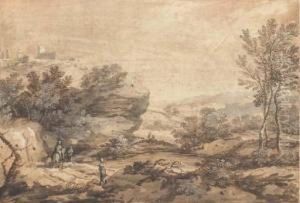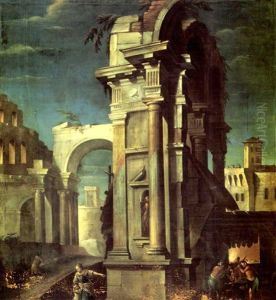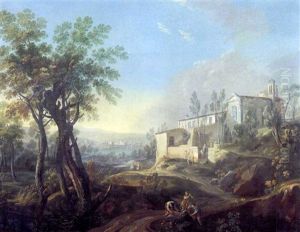Bernardino Minozzi Paintings
Bernardino Minozzi was an Italian painter and sculptor, born in 1921 in Rome, Italy. Minozzi's work is often characterized by its exploration of the human condition, blending classical techniques with modern sensibilities. He was part of the mid-20th-century artistic movements that sought to reconcile the rapidly changing world with the timeless themes of art. Despite the turbulence of the times, including the impact of World War II on Italy, Minozzi's art remained deeply humanistic, focusing on the beauty, resilience, and complexity of the human spirit.
Minozzi's artistic journey began in the vibrant cultural milieu of Rome, where he was exposed to both the rich history of Italian art and the contemporary currents flowing through Europe. He studied at the Accademia di Belle Arti di Roma, where he honed his skills in painting, sculpture, and drawing. Minozzi was particularly influenced by the Renaissance masters, as well as by the modernist movements that were redefining art in the 20th century. His ability to synthesize these influences into a unique style set him apart from his contemporaries.
Throughout his career, Minozzi exhibited his work in Italy and abroad, gaining recognition for his distinctive approach to form and color. His paintings often feature bold, expressive lines and a rich palette that convey intense emotional depth. Similarly, his sculptures are noted for their fluidity and grace, embodying a sense of movement and life that is remarkable for the medium. Minozzi's dedication to exploring the depths of human experience, combined with his technical mastery, earned him a place among the notable Italian artists of his generation.
Despite his achievements, Bernardino Minozzi remained relatively modest about his success, focusing instead on the continual development of his craft. He was a mentor to younger artists and an active participant in Italy's artistic community, advocating for the importance of art in society. Minozzi's legacy is not only in the works he left behind but also in his contribution to the nurturing of a vibrant, thoughtful, and dynamic art scene in Italy.
Bernardino Minozzi passed away in 1987, leaving behind a body of work that continues to inspire and move audiences. His art remains a testament to the enduring power of human expression, capturing the complexity of life with empathy, strength, and beauty. Minozzi's influence can still be felt in the Italian art world, where his commitment to exploring the human condition resonates with new generations of artists.




